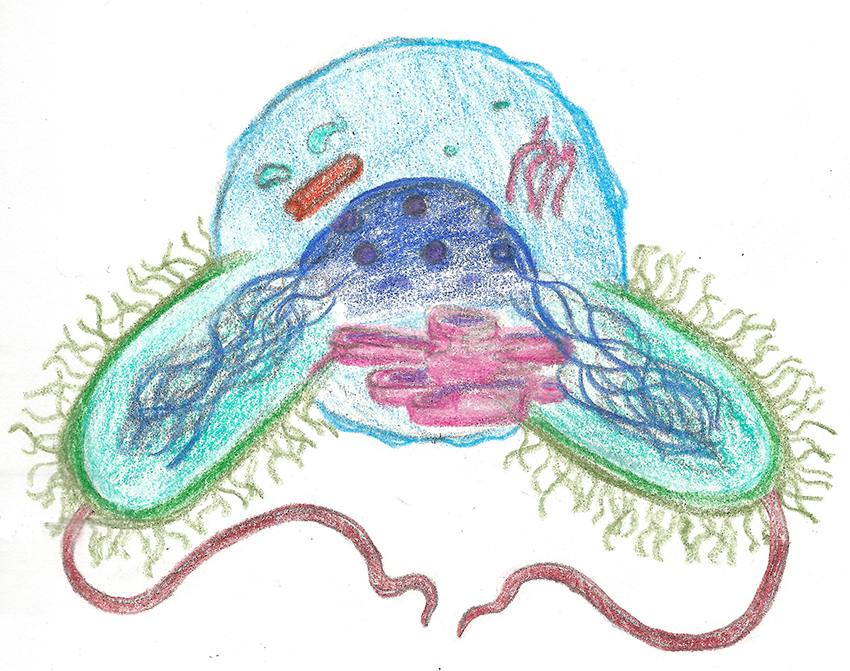Recently discovered microbes named after Norse gods may explain how complex life evolved on Earth.
A paper published in Nature last Wednesday found that a group of microbes from the archaea domain share genetic traits with eukaryotes. These microbes are prokaryotes, or single-celled organisms, while eukaryotes are more complex multicellular organisms, such as animals.
Brett Baker, assistant professor at the UT Marine Science Institute and co-author of the paper, said this discovery is exciting because the traits found in the archaea, part of the Asgard group, were previously thought to be unique to eukaryotes.
The research supports a theory of evolution which includes all three domains of life: archaea, bacteria and eukarya. The theory hypothesizes that archaea and bacteria, which are both prokaryotic, split apart and archaeal cells then evolved into eukaryotic ones.
Ruth Buskirk, a UT biology professor not involved in the study, said scientists have been studying the relationship between prokaryotes and eukaryotes since the 1970s, when archaea and bacteria were determined to be two different domains. She said the current question is how eukaryotes came into existence.
“We could say ‘eukaryotes evolved, somehow, from archaea’ but now we have bit more specific evidence of the connection,” Buskirk said.
This recent paper analyzed genomes from the Asgard archaea, collected from the North Oak River, an estuary in North Carolina. Baker said he believes Asgard archaea might help explain the origin of eukaryotes.
“The theory is that at one point an archae and a bacterium merged through some close symbiotic relationship and formed what were the first eukaryotes,” Baker said. “We think [Asgard archaea] are the descendants of [these] early eukaryotes.”
Baker said the Asgard archaea have certain genes similar to those in eukaryotes that help create proteins inside the cell.
“There are certain genes that make a eukaryotic cell what it is, giving it its internal structures — these [code for] eukaryotic signature proteins,” Baker said. “They were only thought to be present in eukaryotes before, and finding them in Asgard archaea is what links the whole thing together.”
This research follows the 2015 discovery in the mid-Atlantic ridge of the first group of Asgard archaea, called Lokiarchaeota, by Thijs Ettema, Uppsala University microbiologist and the study’s main author.
Baker said the hardest part of this research was reconstructing the Asgard genomes. Baker said because archaea are very challenging to grow in a lab, the team had to instead collect fragments of Asgard DNA from nature and piece them together.
“The analogy I like to use is that you’re taking a thousand puzzles and dumping them all on a table and mixing them up and then you need to put them all back together, which is essentially what we do when we try to reconstruct these genomes,” Baker said. “It takes a lot of computer power and time to put these puzzles back together.”
Kiley Seitz, a UT Marine Science Institute graduate student who assisted with the paper, said once the DNA was sequenced, the team was able to compare the Asgard genomes to preexisting eukarya genomes and found similarities between them.
Baker and Seitz began their research focused on the impact the microbes may have on the overall health of their environment, not on their similarities with eukaryotes.
“These microbes have a large ecological benefit because they’re really in charge of keeping the environment healthy and clean,” Seitz said. “[They] turn over different types of pollutants or matter that starts to build up in the environment and needs to be sent up to higher organisms.”
Baker said the team hopes to understand the role of Asgard archaea in nature and capture the first image of the microbes to determine if they resemble prokaryotic or eukaryotic cells. He said while this discovery was unexpected, it is still exciting.
“We’re discovering and finding something new that people didn’t really think existed,” Baker said. “Essentially we’re blurring the lines of what we thought were clear rules in biology. Finding something like [the Asgard archaea] is once in a lifetime.”















